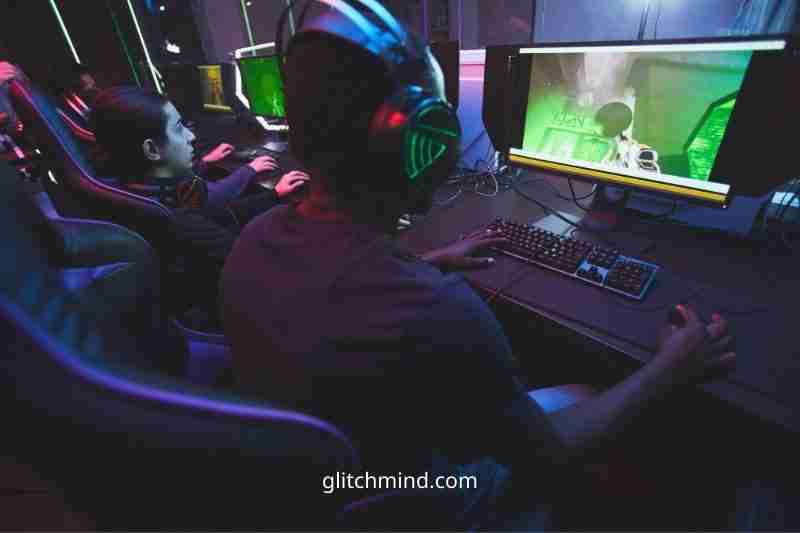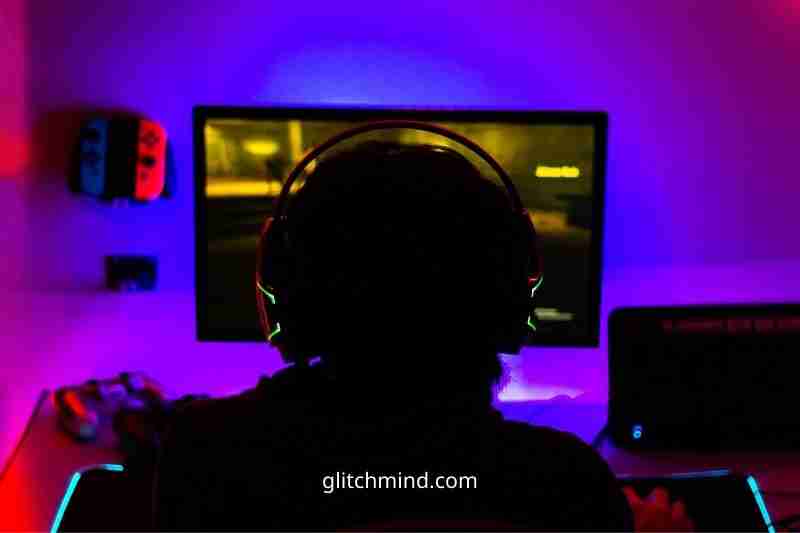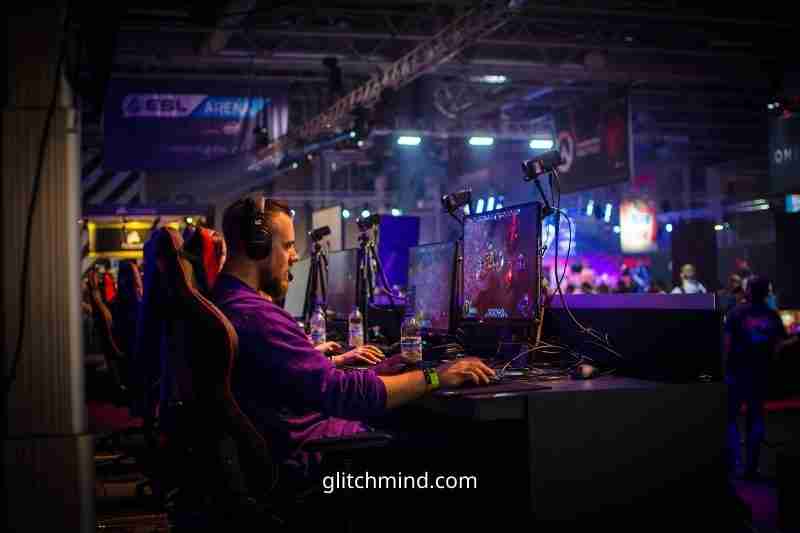How To Optimize PC For Gaming? To get the most out of your PC gaming experience, you need to optimize your PC for gaming. This can be done by making sure your PC is running the latest drivers, ensuring that all your games are updated, and making sure your PC is free of junk files. You can also optimize your PC for gaming by adjusting your graphics settings and using game booster software.
What is low FPS?
Low FPS means that your gameplay is choppy or sluggish due to a slow frame rate. Low FPS is when your computer fails to support the game, and the game slows down.
Your graphics card renders your game in a series of frames. These frames are measured in frames per second (FPS). Your GPU, RAM, CPU and CPU all work together to provide a smooth gaming experience. FPS drops if there is a bottleneck in any one of these components. While most games will display well at 30 FPS or less, many gamers won’t accept anything below 60 FPS.
PC gamers have the edge over console gamers in boosting FPS. You can’t change the FPS of a console. You can increase FPS on a PC as high as the refresh rate of your monitor. Many gaming monitors and laptops now support refresh rates between 144 and 360 Hz, necessary for competitive gaming.
There are many things you can do to optimize Windows 10 for gaming. These FPS booster tips, tricks and tweaks will help you optimize your Windows 10 PC for gaming.

Why optimize your PC for gaming?
It is not a good idea to spend hundreds or even thousands on a gaming computer, only for it to fail. These steps will help you get the best out of your gaming PC, regardless of whether you have unexpected results in games or want it to run smoothly. You want to get the most value for your money, so push for extra frames, even if it’s just a little bit.
1. Low FPS
Low FPS indicates that your computer is not performing well or has a severe problem. Gaming requires that your GPU, RAM, CPU, and SSD work together to deliver smooth gaming. FPS can drop due to the above points or a bottleneck.
No matter the reason, low FPS is something that everyone hates. However, if you don’t see the results you want, you may need to upgrade.
2. Aging PC
Some people will keep playing the same system until they can’t play the games we love. An older computer may struggle to run the most recent game releases. AAA titles can often take full advantage of the latest hardware technology.
Overclocking your computer or turning down the game settings can help your computer age faster. However, you might also consider these steps to push your computer further.
3. Underwhelming performance
These tweaks may help if you don’t get the results you want with a high-end gaming computer. Worst-case scenario, one or more components may be defective. However, you don’t need to panic. It could just be as easy as installing a driver that unlocks the full potential of your card.
How To Optimize PC For Gaming?
1. Enable Game Mode in Windows 10
The simplest and best way to improve your computer’s performance is to enable ‘Game Mode’ on Windows 10. This feature will stop background activities such as Windows updates and app notifications, which can help increase FPS in your games.
Although the default Game Mode setting is “On”, it’s worth checking. Go to Settings (Windows key + I), Gaming, and Game Mode (left sidebar). The right pane will now have a toggle for ‘Game Mode’. If it’s not already, you can turn it on.
2. Lower Your Game’s Resolution and Graphics Settings
You probably won’t need to tweak your computer if it is a mighty machine. If you’re like most people and need smoother gaming, you might have to compromise in the graphics department. The GPU can be strained if you lower the graphics settings in your game. This will increase FPS. The GPU won’t need to support as many pixels per frame.
Relatively new gaming PCs can run 1080p@60FPS most games. Some might not be able to handle 4K, 2K, or 5K resolutions. Your average laptop at work might have trouble with 1080p gaming. It would help if you tried various options to find the best balance between graphics quality, higher FPS, and other factors.
Some games have elementary settings such as ultra, high and medium. Others have sliders or numerical settings. Let’s take a look at some of the scenes in PUBG.
3. Update Graphics Drivers to Optimize Windows 10 PC for Gaming
A classic piece of troubleshooting advice that can be used is to update the GPU with the most recent drivers. This will significantly improve gaming performance. Nvidia’s chart below shows how drivers can improve FPS by up to 23% in some instances. This is also true for the AMD Radeon driver. For those new to PC gaming, we have a detailed guide that will help you update your Windows 10 drivers.

4. Disable SuperFetch (SysMain)
SysMain, formerly SuperFetch, is a Windows feature that speeds up startup times for both apps and Windows. It does not benefit games. Background activity can indeed increase when it’s enabled. However, turning it off can improve your Windows 10 computer’s gaming performance. To learn more about turning SysMain off (SuperFetch), visit our guide.
5. Disable Prefetch
You will need to look in the Windows registry to disable Prefetch. Search for “Regedit” in the Windows search bar. Then, open the registry editor. Navigate to the following key using the left pane: HKEY_LOCAL_MACHINE \ SYSTEM \ CurrentControlSet \ Control \ Session Manager \ Memory Management \ PrefetchParameters. Double-click on EnablePrefetcher (32-bit) and change the DWORD Value (without quotes) to “0”.
6. Enable Focus Assist
Focus Assist is helpful because notifications pop-ups with accompanying chimes may interrupt games. Windows 10’s Focus Assist feature lets you choose how and when notifications are sent. To stop annoying pop-ups and messages while gaming, open Settings (or the shortcut Windows key +I) -> System -> Focus assist. Choose ‘Alarms Only” or ‘Priority Only”.
7. Switch Off Background Services
To optimize your computer for gaming, you can also stop apps running in the background, including Windows 10 services. Background services can eat up extra system resources and cause problems for other activities such as gaming.
Go to Settings -> Privacy-> Background App to disable background services. Turn off the “Let apps run on the background” toggle in the right pane to prevent background apps from using resources. If you don’t want certain apps to run in the background, you can toggle off the main toggle and turn off the individual apps.
8. Uninstall Redundant Programs and Bloatware
Each program you install slows down Windows. Uninstalling programs that you don’t use can speed up Windows 10 and reduce lag. This will increase your computer’s speed and power efficiency.
Go to Control Panel -> Programs & Features. Select the program or app you wish to uninstall, and click the “Uninstall” button at the top. You can confirm your decision to delete the app from your computer.
9. Optimize Power Settings
If you’re using a desktop or a laptop, some power settings can slow down the CPU. A performance-oriented power plan will optimize Windows 10 for gaming.
Right-click, the battery symbol in the notification tray to open Power Options. You can access the power settings menu by going to Control Panel -> Power Options on desktops. Click on “Show Additional Plans” to enable a high-performance plan.
You can adjust your power settings if you are using a laptop directly from the battery icon in the system tray. Click on the icon to move the slider to the “Best performance” option.
10. Disable Mouse Acceleration
Microsoft, pointer Precision, or mouse acceleration allows you to navigate between GUI elements in Windows. It can also negatively impact the performance of your mouse in games. This can be disabled to optimize Windows 10 gaming. Go to Control Panel -> Mouse -> Pointer Options. De-select the “Enhance Pointer Precision” checkbox. You are now done.
11. Tweak Your Nvidia Control Panel or Radeon Control Center
Nvidia and AMD have control panels for graphics drivers that allow you to adjust the settings. Demonstrations are made using the Nvidia Control Panel. However, you can modify the AMD software to achieve similar results.
Right-click on a space on your desktop to access the Nvidia Control Panel. To optimize Windows 10 for gaming, click on ‘Manage 3D Settings.’
Maximum Pre-Rendered frames: This setting determines how many structures the processor prepares before transferring to the graphics card. This setting can be increased to achieve smoother gameplay. You may experience some lag when using your keyboard and mouse for gaming. Set this value to “1” to eliminate lag.
Threaded Optimization (On): This option allows multi-threaded optimization on modern multi-core processors.
Vertical Sync: VSync and its importance for gaming have been extensively discussed. You can find out more about that here. It is best to keep it on to avoid screen-tearing and other graphics problems. Disabling VSync allows for games to run more smoothly in some instances. If your gaming has a faster frame rate, disable VSync.
12. Disable Steam Auto-updates
Steam automatically updates all of your games, which can eat up valuable resources such as memory and processing power. Moisture will not update your fun while you’re playing. To stop this, head to Steam -> Settings-> Downloads. You should ensure that the option to allow downloads during gameplay is not checked. This setting defaults to ‘Off’, so ensure it remains that way.
13. Tweak Visual Effects Settings in Windows 10
GUI animations can slow down your computer’s performance and prevent you from playing the most demanding games. Windows 10 default appearance settings are designed to enhance aesthetics. However, turning them off can improve performance.
To optimize Windows 10’s gaming performance, you can disable all UI animations. Go to System Properties -> Advanced tab-> Performance Settings-> Visual Effects. Next, select the “Adjust for best performance” option and click Apply or OK.
14. Disable Nagle’s Algorithm
Nagle’s algorithm improves your internet connection by reducing how many packets are needed to travel over the network. This is useful for slow connections, but it can cause latency issues when playing online.
Modern internet connections can reach hundreds of Megabits per Second, so it is best to disable them to reduce latency. This will optimize your Windows 10 computer for gaming. Go to Windows PowerShell and enter “ipconfig” (without quotes) to find your IPv4 address.
Now open Windows Registry Editor (Regedit) and navigate to the following folder: HKEY_LOCAL_MACHINE\SYSTEM\CurrentControlSet\Services\Tcpip\Parameters\Interfaces. Here you will find several sub-folders. You can click through each sub-folder to locate the ‘DhcpIPAddress’ value in the right pane. This value matches your IP address.
After finding the correct folder with your IP address, click on the right-click to create a new DWORD 32-bit value in that same folder. Name it “TcpAckFrequency” (without quotes). It should be a value of 1. You can repeat the process with another entry called ‘TCPNoDelay’. This time, it will be a value of 1. After Nagle’s algorithm is disabled, restart your computer. If you wish to reverse the decision, you can delete the keys you have just created.
15. Defrag Your Hard Drive (HDD-only)
Defragmenting your hard drive is another way to speed up access to Windows apps. Windows 10 has a built-in defragmentation option. You can find it by searching for “Defrag” in the Windows Search Box. Piriform’s Free Defraggler can be downloaded and installed for more power-user options. Defragmentation is not recommended for mechanical HDDs. Defragmenting SSDs will reduce their lifespan.
16. Install/ Update DirectX 12
DirectX is an essential part of Windows 10’s gaming experience. DirectX 12 is the most recent version of the API tool. It supports multiple GPUs and CPU cores, higher frame rates, reduced power consumption, and enhanced graphics effects.
Windows updates usually keep the DirectX version up to date, but you can check it manually using the DirectX diagnostic tool. Open the Run dialog box (Windows key +R), type in “dxdiag” (without quotes) and hit Enter. Now you can check your DirectX version.

17. Turn Off Accessibility Key Combinations
There is nothing more frustrating than opening warning windows when playing your favorite video game. While ‘Sticky Keys’ can be helpful for accessibility, they can be annoying while gaming. We recommend that you disable accessibility key combinations while gaming.
Go to Settings -> Ease of Access -> Keyboard (left-sidebar). Move over to the right pane. Make sure the toggles for these settings are switched ‘Off’. Scroll down to the bottom, and uncheck these options:
When you turn on Use Sticky Keys or Use Toggle Keys from your keyboard, display a warning message.
Make a sound while turning the Use Sticky Keys or Use Toggle Keys or Use Filter Keys on and off your keyboard
18. Select the Correct GPU as Default for Gaming
Windows 10 allows you to specify which graphics card an app/game should use in multi-GPU computers. This will improve performance. Your Windows 10 PC will run faster if you set the dedicated high-end graphics card as your default. This topic has been extensively covered. Please refer to our article on setting the default GPU for Windows 10 games and apps.
19. Overclock Your GPU Using MSI Afterburner
MSI Afterburner (Free) is a popular and free tool to adjust GPU settings. It’s reliable and can be used on all graphics cards (not just MSI) and allows you to monitor your hardware in real-time.
This tool allows you to overclock your graphics card by increasing the clock frequency or voltage. It also provides a fan speed control that ensures the right balance between temperature and performance. MSI Afterburner’s OS Scanner function helps you find the best stable settings for your card. This will give you smoother gaming and higher FPS in demanding games. Our detailed guide to MSI Afterburner’s GPU overclocking can be found here.
20. Keep Your PC Cool to Prevent Thermal Throttling
Overheating is a major cause of frame drops and laggy games. Overheating in PCs can be caused by dust and cobwebs building upon fans and other components. This can prevent airflow from being efficient, which is crucial for cooling any computer’s semiconductor chip (CPU, GPU, and RAM).
You will need to keep your computer’s optimal temperature range to prevent it from freezing or hanging. You will need to do several things, including cleaning your cabinet (or case) with canned air, a cloth, ethyl alcohol, and regularly cleaning it. To learn more about maintaining the optimal CPU temperature, please visit our dedicated article.
21. Ensure Optimum Broadband Speed and Latency
Low latency internet connections can lead to lag and slow game response times. A fast, low latency broadband connection will not increase your FPS, but it will reduce lag and improve response times, leading to better gaming performance.
You should check the quality and speed of your broadband connection. If it’s slow or takes too long to reach the server for your favorite game, you can dump it and get a better one. Ookla, Fast.com and Google are good places to test your internet speed. You can use a Wi-Fi mesh network to ensure the best rates or upgrade your routers to Wi-Fi 6/6E.
22. Upgrade Your Graphics Card
Upgrading your graphics card is one of the best ways to improve your gaming experience. Although they are more expensive than some, faster GPUs will improve your FPS and have smoother gameplay. To increase your gaming performance, you can add another unit to your GPU in Crossfire or SLI.
23. Upgrade to an SSD
SSD prices are at an all-time low, so there is no reason to replace your mechanical hard drives. This is especially true for gamers, who can enjoy massive performance gains from solid-state drives regarding reading/write speeds. Solid-state drives speed up Windows 10 boot times and provide lightning-fast access to programs and significantly improve your gaming performance.
24. Add More RAM
RAM is an essential component that can make or break your computer, whether upgrading or building a new one. Modern games are more RAM-hungry than ever, so adding RAM to your Windows 10 gaming system can make a big difference.
You can get a 16GB DDR4 RAM kit with 3200MHz DDR4 RAM for as low as $100, starting March 2021. But, you might pay more for modules with RGB timings and other fancy features. Find the best RAM for gaming at every price point.
25. Reinstall Windows or Get a New PC!
This is the last resort, the nuclear option. If all else fails, your computer is likely too old to handle modern games that require high-end hardware. A complete overhaul could be the best way to get the most out of your Windows 10 PC. This will save you money, but it will also give you the best gaming experience.
Reinstall Windows 10 to optimize your computer for gaming if you are unsure whether to spend a lot of money on new hardware. Windows installation can sometimes be damaged by years of neglect or abuse. A re-installation could fix this. You can improve your performance without spending a dime.
Conclusion
You can increase your FPS by optimizing your computer for gaming. The worst-case scenario is that you have to pay for an upgrade. However, the tips above will allow you to enjoy games at a consistent, smooth level.
Read also:
